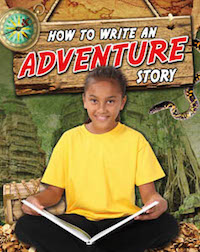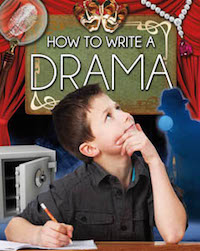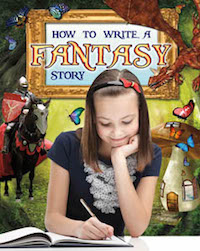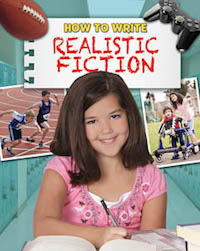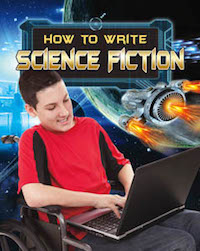| ________________
CM . . . . Volume XXI Number 33 . . . . May 1, 2015
excerpt:
If you could judge a book by its cover, these books are all-stars. Each attractive and colourful cover shows a student engaged in creating a piece of writing. As well as both genders and some diversity of ethnicity, two of the covers also show students with physical disabilities. For the most part, the books live up to their covers. The "Text Styles" series books included in this review look at five different genres of writing: adventure, drama, fantasy, realistic fiction, and science fiction. The five books are written by three different authors but all follow the same format. The books begin with a description of the genre, followed by a chapter about the distinction between prose, poetry and drama writing. Each book then examines the different conventions of the genre. Two examples of well-known works of literature are used to help clarify the characteristics of each genre. In How to Write a Fantasy Story, for example, the author uses excerpts from The Lion, The Witch and the Wardrobe and Peter Pan. The books used in the illustrations are older editions and will probably not look familiar to young readers. However, photos from a current movie or television version of some of the stories, such as The Lion, the Witch and the Wardrobe, give the "How to Write" books a more modern feel. Colourful graphics, photos, and drawings add to the appeal of the page layout. I have one minor complaint about one of the illustrations. The illustration of Wendy and Peter, from a Disney version of Peter Pan, has been very poorly altered to cut off one of Wendy's arms at the shoulder. The attractive layout of print, text boxes, and illustrations, plus clear headings and subheadings, encourage readers to dig deeper into the content. Sections titled "Creative Response to the Science Fiction Story" (or "the Adventure Story", etc.) allow the students to interact with the topics.
Each book also includes a table of contents, glossary, a short index, and a list of resources. How to Write an Adventure Story uses The Voyages of Dr. Doolittle and Black Beauty to illustrate topics such as character development, setting, plot, and the difference between formal and informal speech in dialogue. How to Write a Drama uses excerpts from "Lazy Kate" and "The Emperor's Test" to examine the different conventions of writing a script. How to write dramatic dialogue, stage directions, and dramatic plots are examined in detail with activities for students to practise. As noted earlier, How to Write a Fantasy Story uses examples from The Lion, the Witch and the Wardrobe and Peter Pan to demonstrate how fantasy worlds are created, and the roles of magic, supernatural powers and mythology in creating fantasy. How to Write Realistic Fiction uses two classic works of fiction with strong female characters, Anne of Green Gables and Little Women, to illustrate features such as character development, setting, plot, dialogue, and point of view. It is nice to see an example from a Canadian author included in this series. The cover of How to Write Science Fiction shows a young boy in a wheelchair using a laptop to create his story. Among other interesting details, the reader learns that the "oldest known science fiction writing dates back to around 2500 B.C.E. The tale of Gilgamesh includes aliens and a hero with superhuman abilities." Condensed versions of the short stories, "The Helpful Robots" and "One Out of Ten", are used to illustrate characteristics of science fiction, such as the use of future science and technology, settings in a different time or world, and science fiction characters. It is hard to know if students will read a book about how to write. The activities included in each of the books are interesting and pedagogically appropriate, but it may take a strong sales talk to get the budding authors to do more than look at the covers of these books. If you have a young authors club or a staff that will use these books in their classrooms, these are definitely worth considering for purchase. Highly Recommended. Dr. Suzanne Pierson is a retired teacher-librarian, currently instructing librarianship courses at Queen's University in Kingston, ON. Copyright © the Manitoba Library Association. Reproduction for personal use is permitted only if this copyright notice is maintained. Any other reproduction is prohibited without permission.
Next Review |
Table of Contents for This Issue
- May 1, 2015. |
